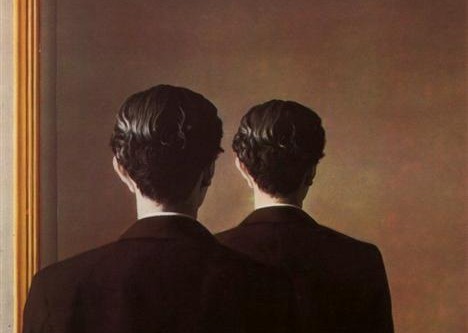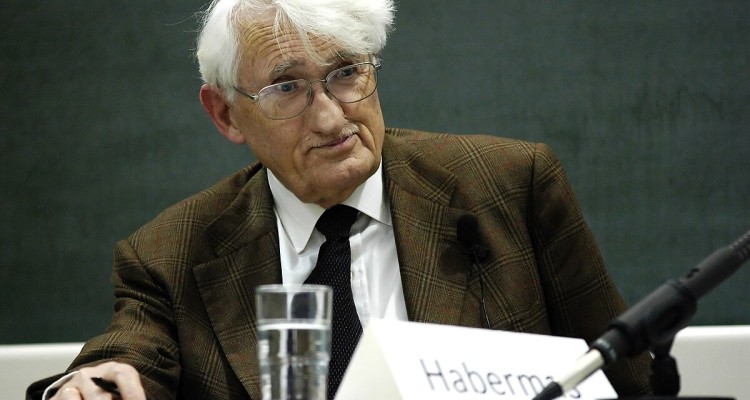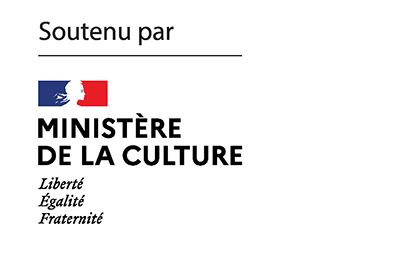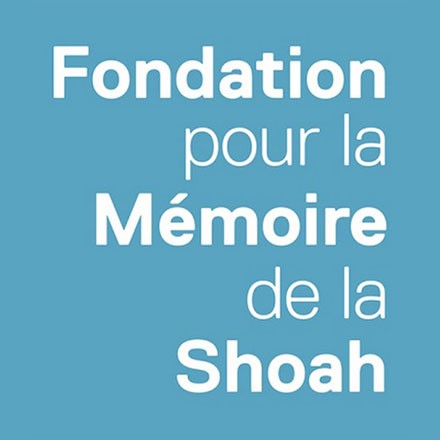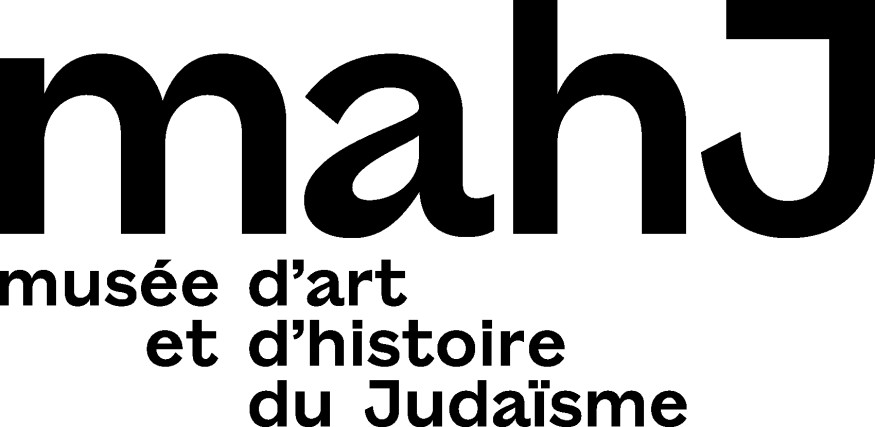By filming their crimes themselves, the Hamas terrorists made a spectacle of the massacre they committed on October 7. A 40-minute film documenting the atrocities was produced by the Israeli authorities and has been shown several times (since October 23 in Israel, since November 14 in France) to selected audiences. What exactly is in this film and how should we deal with these images? In a debate organized in partnership with Akadem, Michael Prazan—documentary filmmaker and writer—and Jean-Baptiste Thoret—film historian—examine the history, uses and effects of documentary images of extreme violence on those who view them.
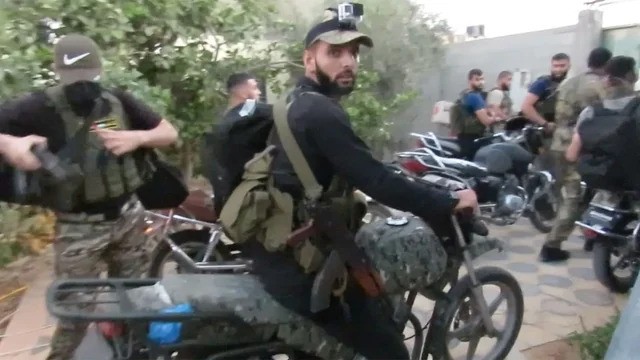
Stéphane Bou: The question of the representation of images of violence and atrocity has been around for a long time, both aesthetically and politically, but it’s one that probably needs to be revisited with modern terrorism. Let’s start by looking back at the precise history—probably at least since 9/11—of the introduction of images of crime as one of the weapons of the criminals themselves, who are eager to record and disseminate them.
Michael Prazan: I will approach this story through three motifs—pleasure, trophy, and recruitment. Setting aside recruitment for the moment, which I will come back to later, we are left with pleasure and trophy. I will then trace back to the Einsatzgruppen, that is, the initial phase of the genocide of Jews undertaken by Hitler and Nazi Germany
As soon as the first massacres of Jews began, Hitler demanded to see them. Photographers and filmmakers were sent to document the killings, and the pictures were included in the daily reports of the Einsatzgruppen to the RSHA[1]. Hitler wanted to see how these mass executions were carried out. And it’s worth remembering here that in the first sequence of this phase of the genocide— in the early summer of ’41—these massacres take place outdoors, as a spectacle for the locals who witness them. Later, the Nazis tried to reduce the number of witnesses. They both closed the “spectacle” of the massacres to the “public,” so to speak and forbade the perpetrators to take photographs. This was also the reason why professional operators took over the task of documenting what was happening.
The question of trophies and pleasure arises from the moment the perpetrators are forbidden to record the massacres. In fact, photography cannot be controlled. Many of the executioners were equipped with small Leica cameras, and not only did they take photographs for themselves, regardless of Göring’s or the RSHA’s instructions, but they also collected and exchanged them among themselves. The same phenomenon occurred during the massacre committed by the Japanese in Nanking, the former capital of China, when the soldiers exchanged photographs they had taken of executions, massacres, and beheadings. This was all done internally, and the pictures were not released to the public. So, to return to the question of the Einsatzgruppen massacres, when Nazi Germany lost the war, Berlin was bombed, and the evidence had to be disposed of, the first thing the Nazis did was destroy the pictures they had in their possession. Not all of them disappeared, but most of them did. But they could do nothing about the pictures taken by the German soldiers themselves…
It’s worth recalling here that during the Shoah, there came a moment when it was officially decreed that the crime had to be carried out in absolute secrecy. This is reflected in Himmler’s famous Poznan statement of October 1943, when he said that the extermination of the Jews was “a page of our history that will never be written,” referring to a “secret” that the murderers must take to their graves.
MP: Yes, but again, until the end of this first phase of the genocide, there were professional operators sent by the RSHA who continued to go out into the field to film and photograph. It is clear that mass crimes were documented. For example, the Babi Yar massacre, in which 33,771 Jews were murdered in two days in Kyiv, was filmed and certainly photographed. Today, however, there is no trace of these recordings. It was the perpetrators who did not refrain from taking pictures without permission, like trophies and objects of pleasure. At that time, these images were not intended to recruit new Nazis or murderers. But it is precisely the phenomenon of recruitment through images that will develop throughout the history of terrorism.
When does this phenomenon begin?
MP: I’ll go back quite a long way. In my opinion, one of the key events in this story took place in 1971, when the Popular Front for the Liberation of Palestine (PFLP) hijacked three airliners and blew them up. They filmed these explosions. There were no fatalities. Passengers had been evacuated from the planes before they exploded. The fact remains that these images made a strong impression on radical militants around the world, who, thanks to this publicity, would join the Palestinian struggle, which was not yet in its Islamist phase.
Then came 9/11…
MP: We should point out that on 9/11, it was not the terrorists themselves who filmed their spectacular operation. The attack took place at the heart of a new era in which the image had become dominant—the event was filmed live by scores of private cameras or television crews. These highly spectacular images would travel around the world, publicizing an operation, a brand—in this case, al-Qaeda—and generating recruitment for terrorist organizations. But the real turning point—and here we enter a different kind of humanity, if I may say so—was the murder of Daniel Pearl, the American journalist in Karachi, again by al-Qaeda or an al-Qaeda affiliate, whose throat was slit in front of a camera that recorded his murder and broadcast it live. The Nazis didn’t want to talk about the executions they filmed or photographed for fear that people would identify with the victim. The real shift, starting with the murder of Daniel Pearl, was to use images to identify with the executioner for the purpose of recruitment. It’s a real paradigm shift. Daesh, in particular, will film the worst executions and produce images that repulse and tetanize us, but which have the opposite effect on people who are already radicalized, or in the process of being radicalized, in terms of pleasure and exaltation. The identification with the executioner, rather than with the victim, that these images promote will encourage recruitment. The intention behind the filming of the October 7 massacres also fits into this logic. Incidentally, I understand that these images have had the same effect—there are people who, after seeing them, have sought to join Hamas…
Jean-Baptiste Thoret, how would you describe the situation of the average viewer who, sitting behind his or her multiple screens, is confronted with these images of atrocities that end up intruding into his or her daily flow of images and information? What effect do these images have on ordinary people?
Jean-Baptiste Thoret: I believe we need to grasp the magnitude of what happened with the images of September 11, which continues to question our topical situation. Let’s recall the comments of that time, stating that the terrorists had employed a modus operandi, a certain framework of pre-existing images, acclaimed by the West, by Hollywood. In other words, the terrorists had utilized aesthetic and cinematic codes with which we, as viewers, are familiar, to introduce the reality of a deadly event. When we see the planes approaching the towers of the World Trade Center, ultimately collapsing, there is a moment of hesitation or indecision. We have the sensation of witnessing something we have already seen…
As if something that’s already been seen in disaster movies was happening in the real world?
JBT: That’s it. There’s this quality that we attribute to Hollywood cinema when we say—and there was a lot of talk at the time—that it had already made these images. It was as if 9/11 was in some way a remake of images and movies that had already been made. Hence the sense of both amazement—we’ve never seen anything like it—and repetition—we’ve seen it a hundred times before. It should also be remembered that the American media had control of these images at the time. And they were going to broadcast the collapse of the towers over and over again. These were not images filmed by al-Qaeda, but terrorists could use them. Like a Trojan horse, the images of their attacks curl up inside an overwhelmed media machine, the Western media machine, and derail it. Or rather, we should ask ourselves whether these images derail the machine or push it to a point where its own repressed content emerges. For my part, I believe that the ambiguity of these images stems precisely from the fact that they go to the very end of a fascination that haunts contemporary Western images—that of filming murder. Normally, this fascination runs up against a prohibition, but these images transcend it and raise a question that is exacerbated by the fact that the images are produced by the terrorists themselves: what should be shown? Because the media can choose to broadcast or not. The images of the assassination of Daniel Pearl are exemplary in this respect because the sender is no longer the same—the terrorists produce a video in which everything is shown: the intention, the execution, and the result. So what do the Western media do? They decide to censor. Not everything is shown. We see the executioner preparing to carry out the deed, and the moment it happens, the broadcast is stopped. What the West can’t show is the execution.
MP: The big difference between 9/11 and Daesh or Hamas today is the issue of broadcasting. During the 9/11 attacks, the terrorists had no control over the broadcast, so they kind of left it to the TV stations or whoever could film the event. Social networks, of course, will change the situation completely. Thanks to them, anyone can broadcast. You can now film an assassination with a GoPro and send the images around the world in almost real time. This will obviously multiply the number of people able to see “homemade” images of massacres.
This was the case on October 7, when images were immediately broadcast on the networks at the very moment the crimes were committed. But the question raised by Jean-Baptiste Thoret remains, that of the moment when, after the event, the media ask themselves what should be shown and what should be censored…
JBT: Yes, from the point of view of the terrorist broadcaster with his private channel, there is no official media anymore. Everyone creates their own little TV channel, except that it’s part of an absolutely global network. But it’s important to understand that the channel produces a raw image, a complete rush. They film an execution that lasts two, three, five, ten minutes, and so on. And what do we do in the war of images that is unleashed? We don’t show everything. In other words, we’re behind the curve from the very beginning.
Let’s take a look at the distribution of the October 7 images over time. First, the images were broadcast on social networks, and then on television. Then the Israeli army recovered GoPro cameras from the bodies of Hamas terrorists and found itself in possession of dozens of hours of footage shot by the criminals themselves. The Israeli authorities decided to make a movie of just over 40 minutes from this and other footage (especially from surveillance cameras or footage shot by the first rescuers to arrive at the scene of the massacres). They have organized targeted screenings for selected audiences. They explain before each screening that people will only be shown a very partial selection of what can be seen. We insist on this fact—we will see only a part of the horror. Not everything can be shown, as if there were an excess of horror that resisted being broadcast. This protocol raises many questions—How much is too much? Are we reserving access to these images for certain people who are deemed legitimate and capable of telling them? My first impression was that these images embarrassed Tsahal, that it hesitated and didn’t know exactly what to do with them…
MP: Unlike you two, I haven’t seen the film, and I don’t want to. The images I’ve already seen are enough for me. What I can talk about is the intention behind this screening. I spoke about pioneers—I mentioned the Nanking massacre in 1937, I mentioned the Einsatzgruppen… But there’s something that can’t be anticipated through these cases, and that’s the denial of images. When the Nazis were brought to trial, whether it was high-ranking officials or the executioners, they could never have imagined denying the crime they had participated in. It’s something that came later, even if it happened very quickly—as early as 1945, voices started to deny the very existence of the genocide. From there, some will spend a lot of time refuting the evidence, saying that this or that photo is fake, that it is a montage… There’s a real enterprise to destroy and delegitimize evidence in general and visual evidence in particular. And obviously, the relationship with images is even more denigrated, distorted, and suspect today than it was then. With Chat GPT, with artificial intelligence, it’s extremely easy to fake an image. It’s a far cry from the much more artisanal means available to Stalin, for example, although he taught us a lot about what was possible. So it makes sense that there’s a terrible distrust of images. That is why, in the context of the war that is unfolding before our eyes, it is so important, even essential, for the Israelis to provide immediate proof of these massacres. Because the massacres of October 7 and the images that testify to them have been denied in real-time.
It’s true that as early as October 8, we heard people denying the massacres and doubting the reality of the images. But the fact is that the vast majority of the images in this film were already in circulation before the Tsahal film was screened. Above all, it is a montage that offers a selection. You could say that much of the material from which the movie is made was already available. So, of course, the intention is to prove what happened. But I’m more interested in the form of this movie, the apparatus that surrounds it, the way it’s conceived…
JBT: If we look at the intention, we can see that Tsahal is indeed trying to provide evidence to cut short some sort of negationist desire. Of course, this won’t prevent the latter from taking place, and in fact, we’ve seen that it has already taken place. But I imagine that Tsahal’s intention is to produce a stupefaction effect, something that is indisputable.
However, I would refine the problem by asking the question of the audience, which is extremely diverse. I think we can divide the mass of spectators, somewhat crudely and caricaturally, into three categories. There are those who are already convinced, who know, and who don’t want to see the movie because for them the image would be unbearable and wouldn’t teach them anything. They already know everything there is to know. At the other extreme, there are those to whom you can show any image and they’ll say it’s fabricated, fake, produced by an AI that serves Israeli propaganda. So I would say that these two categories of people are not targeted by Tsahal. In a way, there’s no point in showing them the images, because these are causes that have already been won or lost. We won’t try to convince either the people who tell us that this is not a terrorist act, that it is “only” a war crime, or even an act of resistance for the worst of them, or those who are fully aware of the existence of this historical moment. Putting myself in Tsahal’s shoes—which is a very complicated thing to do—it seems pointless to target these two categories of irremovable people. Although I wouldn’t be able to quantify it, I would bet that it’s worth trying to target that in-between zone of people who are hesitant, who don’t know, who are in a state of “yes, but…”.
Let me give you an example—Jean-Michel Ribes, at the opening of the so-called cultural world march, a march for peace, said: “These massacres on both sides are not human. We are outside humanity.” This statement is only possible if a kind of equivalence is established—there would have been the massacre perpetrated by Hamas terrorists and, in response, revenge or not, the massacre perpetrated by Israel. What can prove that the difference between one massacre and another is not one of degree but of nature? What can prove it? Is it the discourse of a politician or a historian? I think the only thing that can prove it is the image, even if some will say it’s a fake. You can’t do anything about that. Personally, I find this symmetry between the two massacres frightening, and I think the only way to avoid it and prevent complete negation is to use these images of horror.
We only see the beginning of an execution in one or two sequences. And then the big suppressed part of all this is all the sexual violence, the rapes, the mutilations, the utterly horrific things that were done to Israeli women. So it’s easy to understand why those pictures don’t come out. But they have been told by Israeli families, by many people, even if it was in a deafening silence because feminists didn’t take up the cause. Actually, from my point of view, these atrocities are one of the essential facts. They were planned, programmed, and broadcast by Hamas. Some of the terrorists who were captured by Tsahal explain the importance of degrading the bodies, they describe the heinous things they did. Personally, I think that the event lies in these atrocities and that the images are precisely what would make it possible to differentiate this massacre. But the pictures we saw in the 43-minute production fall a little short of the words and soften the story. Compared to what I know happened, especially on the issue of violence against women, the proof-picture is long in coming, and in the end, it falls short. I think that’s what’s missing—if we’re going to wage a war on images, if we’re going to use pictures as a weapon of war, the weapon has to be effective.
MP: There was a reference earlier to the embarrassment of the Israeli authorities. In my opinion, embarrassment is what determines the choice of images, along with the question of respect for the victims. That’s where the Israeli embarrassment lies—in the absence of images of rape as a weapon of war. Let me give you an example to illustrate this point. It concerns the images of the Skede massacre in Latvia, perpetrated by Nazi auxiliaries in December 1941. A professional photographer, sent from Berlin, took a series of photos, complete to this day, of a massacre in its entirety—from the undressing of the victims (women and children) to their execution in the pit. So we see these photos of naked women passing in front of those who are going to murder them and who clearly enjoy seeing these stripped bodies. I included these images in my documentary on the Einsatzgruppen, and I remember the reactions at one of the first screenings of the film. There was this group of Lacanians, quite elderly by the way, who were horrified by my use of these images. I found their reaction both strange and disproportionate. One of them, who was in the audience, came up to me to explain. He reminded me that immediately after the war, the USSR wanted to bear witness to the genocide that had taken place. It was obviously a communication operation in their favor, so they distributed these kinds of images in large photo albums all over the world, including France. This was just after the war, at a time when pictures were still very rare and hard to find, especially nude ones. He tells me that for his generation, it was the first time they’d had the opportunity to see images of naked women. He suggests that, deep down, something of their initiation into sexuality came from looking at these pictures. Obviously, it must be traumatic for teenagers to be confronted with this combination of horror and pleasure.
I think that Israelis, consciously or unconsciously, are afraid of this as well. Of the traumatic shock, the psychic detonation that these images might cause, this mixture of rape, nudity, violence, and murder.
It’s true that Tsahal is concerned—and this explains its embarrassment—not to perpetuate the act of desecration by showing the pictures. I think this was probably the argument used to justify cutting out some of the atrocities, especially the sexual violence. But I’d like to ask you, Jean-Baptiste Thoret, about the combination of horror and pleasure that Michael Prazan was talking about. We’re obviously in a different situation today, in the sense that, unlike the psychoanalyst Michael Prazan was talking about, the public is used to this kind of image, which was rare at the time. But there remains the question of the mixture of horror and fascination that leads to possible enjoyment on the part of the spectator. Especially since in this 43-minute movie, the question of the executioner’s pleasure is absolutely central. It’s perhaps the most horrifying thing about this film—to witness the pleasure the executioners take in their crime, and the way they stage their pleasure, trying to prolong it in the image.
JBT: It’s a debate as old as the images themselves. When Kubrick made A Clockwork Orange in 1971, some people told him that it would be extremely dangerous to show Malcolm McDowell’s exactions, especially the famous rape sequence, because some people might identify with the main character, in this case, the executioner, and reenact the same thing.
It’s interesting that you mention A Clockwork Orange because there’s a sequence where the protagonist is forced to look at horrific images, where his eyes are held open so that he can’t escape the vision of the horrific images being shown. This raises the question of how far we can and want to face violence, horror, and evil in history…
JBT: Yes, the Ludovico treatment is already about the interweaving of fear and pleasure. With 9/11, too, we find this kind of indecisive mixture between a fascination with what looks like a Hollywood movie and a fear of what’s happening, of the corpses. We see very few of those corpses, by the way, because they’re pushed off-screen. There were deaths, but at the time we were careful not to show the bodies of the famous “jumpers,” the people who jumped from the towers. In fact, you can see in the footage that was taken on the scene that the cameramen tended to move the camera to avoid filming the bodies. And when some are in the frame, they are edited out, just as Tsahal would do 25 years later with the rapes and executions. But what couldn’t be suppressed at the time, what overwhelmed the screen, was a certain pleasure on the part of the viewer, a fascination with these scenes of destruction, which seemed to be the realization of a great figure of Hollywood disaster cinema, the moment when everything collapses.
But it’s important to distinguish between reality and fiction. We’re used to images that are constructed at a distance from the viewer, creating a gap with him or her, images that are the hallmark of fiction. But here’s the problem, the term sideration alludes to the fact that the gap is closed, that it’s impossible to maintain a distance, and that we feel literally crushed by images that show things that we know have already happened.
JBT: I think it’s impossible to clearly separate reality from fiction, and it’s precisely these cases that force us to accept this fact. Coming back to the Tsahal film, it seems to me that, on the contrary, it could be said that it allows the viewer too much distance. There is a sure sign—at the screening we attended, no one left the room for 43 minutes. In my opinion, if the projected images had been equal to what happened, it would have been unthinkable that no one would have left the room. For me, that’s the important question—are we presenting images that correspond to the reality they capture?
MP: Finally, these people who have been massacred have relatives, families, and friends. It’s easy to see that we can’t be indifferent to the question of what images can be shown and broadcast.
JBT: Of course you can. But nothing ever stops you from blurring faces or identities, which is what was done in this movie. The problem with this logic, if you will, is that it leads to a kind of schizophrenia. On the one hand, you want to tip the balance in your favor, to avoid negationism, which means showing what happened. And on the other hand, we carry out operations that are almost the opposite, because we don’t dare to show the horror to the end, we avoid the worst. I believe that if we really want to engage in the war of images, we must be able to use all the ballistic power at our disposal. Above all, we must realize that this war of images is taking place in the age of social networks, where everything is visible.
MP: There’s something in what you say that shocks me a little bit, even though I know that’s not your intention at all. It’s this idea that the movie won’t live up to expectations. And here, in a way, you’re turning us into fiction. In other words, we could go to this screening as if we were watching a show that might disappoint our expectations. I think it’s a slippery slope. The idea of this movie cannot be to shock for shock’s sake. We all know what happened, we all know that there were rapes. So, of course, there’s a desire to bear witness to what happened, but we have to make a selection in the images, if only out of respect for the victims. We must avoid turning this debate into a form of abstraction.
JBT: What I mean is that all images have their share of impurity. It’s impossible to look at an image in a completely pure way; no one can perfectly distinguish between what is pleasure and what is horror. The two are always mixed up, even for the most congenial and morally or ethically dignified people. If you’re not aware of that, you’re heading for setbacks. Then you say—“everybody knows about the rape.” But no, that’s not true. We here know, but certainly not “everyone” does.
MP: Journalists and parliamentarians, who are the target audience of this film, know this themselves.
JBT: Yes, but do you think that the echo around sexual violence and these atrocities that have been committed is equal to this “ everybody knows?” No. Maximum knowledge, minimum transmission. So we have to ask ourselves what could reverse the trivialization and symmetrization of the massacre. What images would do that? In my opinion, the ones we saw the other day won’t do the trick, because they only provide evidence of a part of what happened.
MP: I don’t want to see this fifteen-year-old girl raped and butchered on camera. I know those images exist, but I don’t want to see them. I don’t think I’m just an average viewer, but I don’t share the idea that it’s necessary to see them.
The last question I’d like to ask you is what kind of documentary work could be produced from these images. I’m talking about the future, outside this war of images, to create some distance, a gap.
MP: It will take time, but I’m sure that there will be movies based on these images, that there will be critical documentaries in which we can read an intention, a commentary on the event. But that’s not the case today, because we’re still working with raw material. These images are destined to remain and bear witness to what happened, and distance from them will come with time. But until that distance is established, we’re in an extremely uncomfortable relationship with them. First, because to show them is in a way to prolong the gesture, to fulfill the desire of those who filmed them. And because some viewers will inevitably be aroused by these images. There’s nothing we can do about that.
JBT: Yes, but the other thing is precisely to know in which temporality we want to inscribe these images—the present, made up of political and historical necessities, or the distant past, made up of archives? When Tsahal organizes this screening, it does so with the intention of influencing history in real-time, today, at the end of November. The first objective, of course, is to turn the argument of denial on its head and to try to restore the balance of world opinion. The goal is political. But we can also think of these images as part of a long-term archive and use them in twenty years for documentaries… I fully understand the reasons behind this, namely the dignity of the victims and the fear of horror. But history will have happened, and it would be a shame not to have tried to change its course. I think that in Tsahal’s embarrassment, we also perceive this difficulty of finding out whether images should be inscribed in the present or whether they already, and perhaps exclusively, work for memory.
MP: I think you’re overestimating the political impact of these images. They don’t change points of view or attitudes, as we saw live when the LFI[2] deputies watched the footage. These images didn’t have enough impact to enable them to shift their standpoints, to become aware of this historic event.
Jean-Baptiste Thoret will tell you it’s because the film isn’t up to the task.
JBT: And above all, these deputies do not belong to the intermediate zone, but already know what they want to believe!
MP: With this war, a compassionate hemiplegia has struck us, on both sides. Someone who was extraordinarily shocked by the images of October 7, or even by the idea of those images, will find it hard to sympathize with the images of bombing civilians in Gaza, of women and children dying. In the same way, and perhaps even more spectacularly, pro-Palestinian or pro-Hamas people, depending on their level of knowledge of the conflict, will be affected above all by these images of Israeli bombardments and, in the worst case, will reject out of hand the images shot by the terrorists after the massacres they committed on October 7. These positions are immovable, and images don’t change them.
Interview by Stéphane Bou
Michael Prazan is a film director and writer. He is the author of a history of terrorism, an investigation of the Muslim brothers, and a work on the Einzatsgruppen.
Jean-Baptiste Thoret is a film director, historian, and critic. For many years, he worked as a critic at Charlie Hebdo and was late for the editorial conference on the day of the massacre at the weekly’s offices. He has written and worked extensively on the violence of images, in the context of both fictional and documentary film history.
In partnership with 
Notes
| 1 | The Reichssicherheitshauptamt was the Reich Main Security Office in Nazi Germany in Berlin |
| 2 | LFI refers to La France Insoumise (France Unbowed), a left-wing political movement and party that refused to clearly condemn Hamas atrocities. A handful of LFI’s MPs agreed to watch the film edited by Tsahalwhen it was screened at the National Assembly. |
